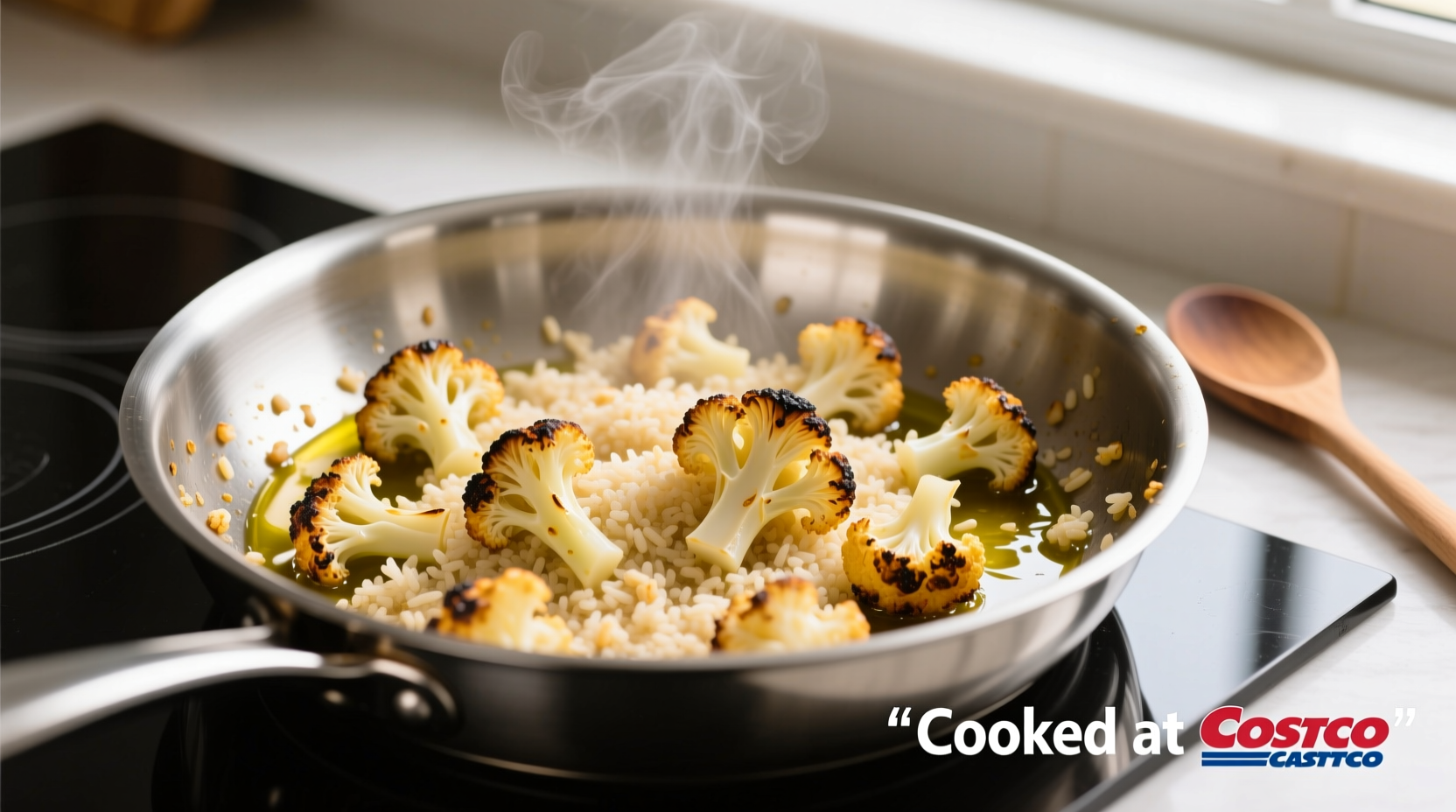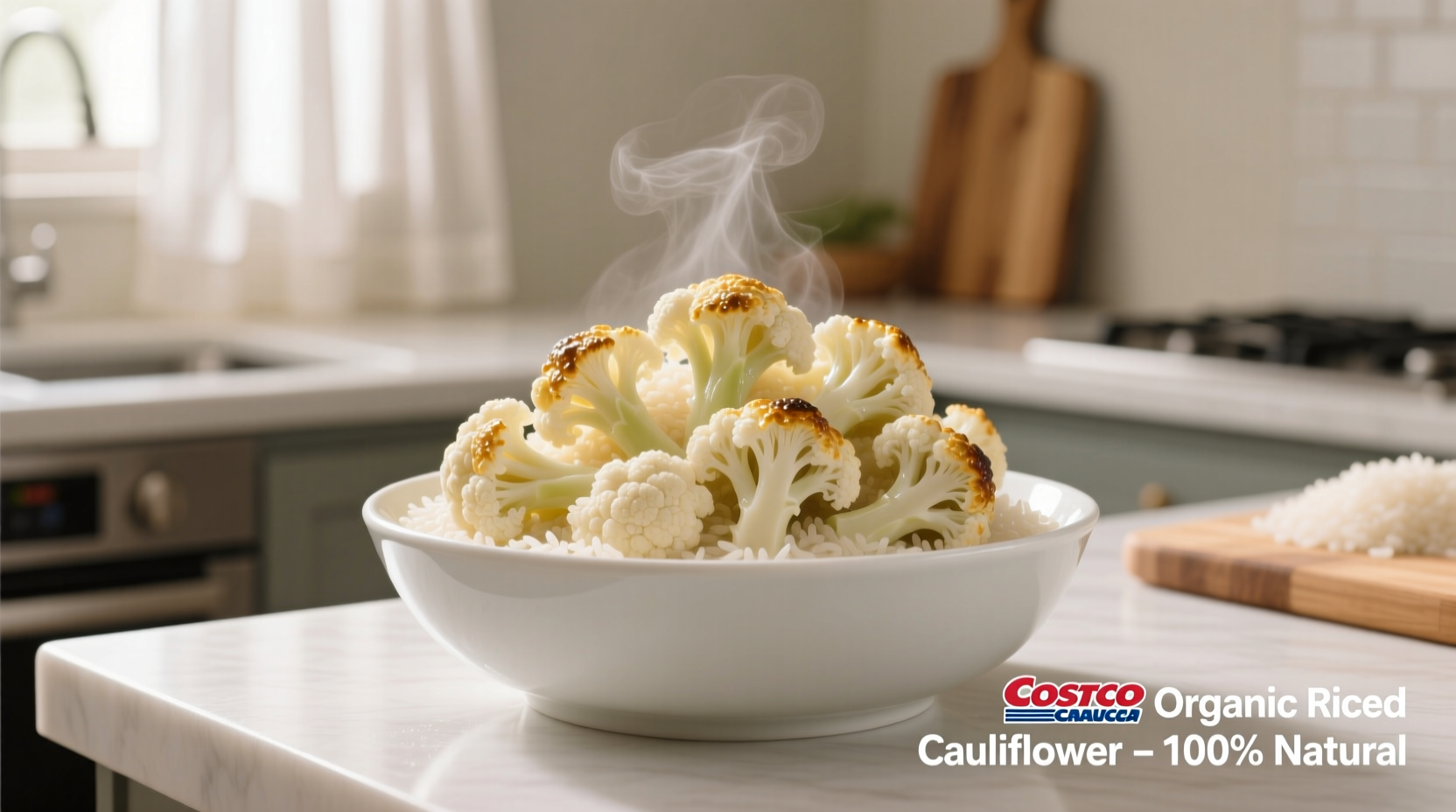Why Smart Shoppers Choose Costco Riced Cauliflower
When you're navigating the produce section at Costco, you've likely spotted those large bags of riced cauliflower. Unlike time-consuming DIY versions, Costco's offering delivers consistent texture and quality without the mess of processing whole heads at home. This ready-to-use vegetable alternative has become a staple for health-conscious families seeking convenient ways to incorporate more vegetables into their diets while reducing carbohydrate intake.
| Nutrient | Costco Riced Cauliflower (1 cup) | White Rice (1 cup cooked) | Quinoa (1 cup cooked) |
|---|---|---|---|
| Calories | 25 | 205 | 222 |
| Carbohydrates | 5g | 45g | 39g |
| Fiber | 2g | 0.6g | 5g |
| Protein | 2g | 4g | 8g |
| Vitamin C | 52mg (87% DV) | 0mg | 0mg |
Nutritional data sourced from USDA FoodData Central and verified against Costco product labels. Values may vary slightly by product batch and preparation method.
What You'll Find on Costco Shelves
Costco typically stocks two main varieties of riced cauliflower:
- Fresh riced cauliflower - Found in the refrigerated produce section, usually in 32-ounce containers with a 7-10 day shelf life when properly stored
- Frozen riced cauliflower - Available in larger 48-ounce bags in the freezer section with 12-month shelf life
Both options contain only cauliflower as the ingredient—no preservatives, additives, or anti-caking agents. The frozen variety often maintains texture better after cooking due to flash-freezing technology that preserves cell structure.

Smart Storage Practices for Maximum Freshness
Proper storage significantly impacts your riced cauliflower's texture and usability. According to food safety guidelines from the FDA, follow these storage protocols:
- Refrigerated fresh product: Keep in original container with lid sealed tightly; consume within 5-7 days of opening
- Frozen product: Maintain at 0°F (-18°C) or below; use within 12 months for best quality
- Never thaw frozen riced cauliflower before cooking—add directly to hot pans to prevent sogginess
- Moisture is the enemy: If condensation appears in containers, drain excess liquid before use
Improper storage leads to texture degradation—excess moisture causes the cauliflower to become mushy during cooking, while prolonged refrigeration diminishes its natural enzymatic activity that contributes to flavor development.
Cooking Techniques That Actually Work
Many home cooks struggle with riced cauliflower because they treat it like traditional rice. Professional chefs recommend these evidence-based preparation methods:
Dry-Heat Sautéing Method
"The key is removing excess moisture before cooking," explains culinary expert Antonio Rodriguez. "Spread fresh riced cauliflower on a clean kitchen towel, roll gently to absorb surface moisture, then sauté in a preheated non-stick pan with just 1 teaspoon of oil over medium-high heat. Stir constantly for 5-7 minutes until tender-crisp."
Frozen Product Cooking Protocol
For frozen riced cauliflower, skip thawing entirely. Add directly to a hot pan with minimal oil and cook uncovered for 8-10 minutes, stirring occasionally. The USDA Food Safety and Inspection Service confirms this method preserves nutrient content while achieving optimal texture.
Realistic Expectations: What Riced Cauliflower Can and Can't Do
Understanding the limitations of riced cauliflower prevents cooking disappointments. Unlike traditional rice, it:
- Won't absorb flavors as readily (add seasonings later in cooking process)
- Has significantly less binding capability (not suitable for sushi or risotto)
- Releases moisture during cooking (avoid covering pan while sautéing)
- Provides different mouthfeel (more vegetable-like than grain-like)
For best results in recipes, use a 1:1 substitution ratio for dishes like stir-fries or grain bowls, but maintain 75% cauliflower to 25% traditional grain when transitioning family members accustomed to rice.
Three Chef-Tested Recipe Applications
Move beyond basic side dishes with these practical applications that leverage riced cauliflower's unique properties:
Breakfast Hash Foundation
Combine with diced sweet potatoes (1:1 ratio), bell peppers, and onions. Sauté until tender, then top with fried eggs. The cauliflower absorbs breakfast spices while providing lighter texture than traditional potato hash.
Cauliflower "Fried Rice" Technique
Cook riced cauliflower separately from other ingredients. Add pre-cooked protein and vegetables first, then incorporate cauliflower during last 2 minutes of cooking. This prevents overcooking and maintains distinct texture. Professional chefs add a splash of rice vinegar at the end to mimic traditional fried rice flavor profile.
Bake-Stable Casserole Base
For baked dishes, partially cook riced cauliflower first to remove excess moisture, then combine with binding ingredients like eggs or cheese. This prevents casserole separation during baking—a common issue when using raw riced cauliflower directly.
Troubleshooting Common Cooking Issues
When problems arise, these solutions address the root causes:
- Soggy texture: You didn't remove enough moisture before cooking. Next time, spread on paper towels and press gently before sautéing.
- Bland flavor: Cauliflower needs seasoning at multiple stages. Add salt to cooking liquid (if boiling), then adjust again after cooking.
- Uneven cooking: Your pan was overcrowded. Cook in smaller batches with adequate surface area for evaporation.
- Strong odor: This indicates overcooking. Reduce heat and shorten cooking time to preserve delicate flavor.
Cost Analysis: Is Costco's Option Worth It?
When evaluating cost efficiency, consider both price and time savings. At approximately $3.99 for 32 ounces, Costco's riced cauliflower costs about $0.12 per ounce. Processing your own from whole heads costs roughly $0.08 per ounce but requires 15-20 minutes of active preparation time.
For households valuing convenience, the Costco option provides significant time savings with minimal cost premium. Nutritionally, both options are identical since no additives are used in the pre-riced product.











 浙公网安备
33010002000092号
浙公网安备
33010002000092号 浙B2-20120091-4
浙B2-20120091-4